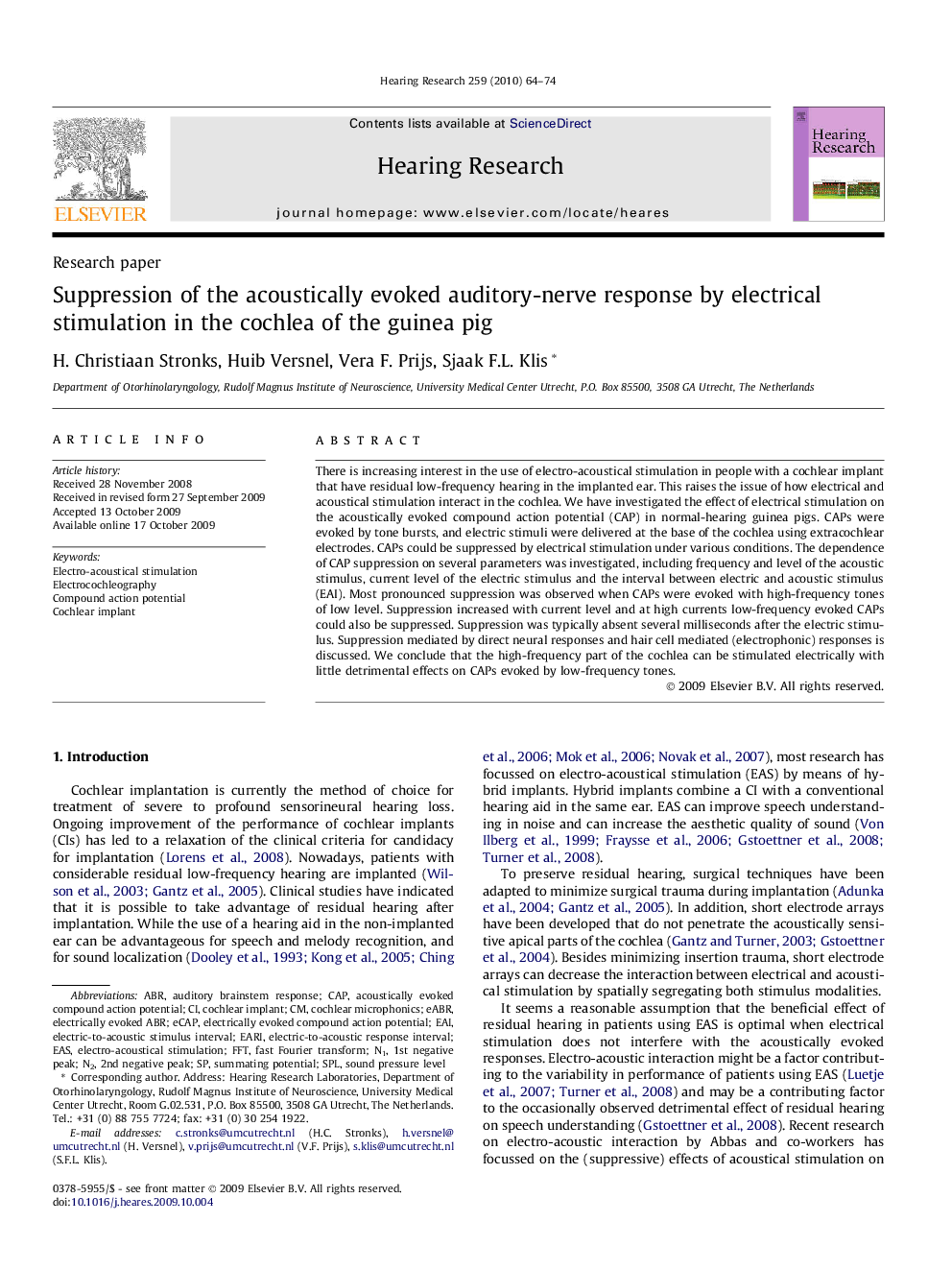| Article ID | Journal | Published Year | Pages | File Type |
|---|---|---|---|---|
| 4355850 | Hearing Research | 2010 | 11 Pages |
There is increasing interest in the use of electro-acoustical stimulation in people with a cochlear implant that have residual low-frequency hearing in the implanted ear. This raises the issue of how electrical and acoustical stimulation interact in the cochlea. We have investigated the effect of electrical stimulation on the acoustically evoked compound action potential (CAP) in normal-hearing guinea pigs. CAPs were evoked by tone bursts, and electric stimuli were delivered at the base of the cochlea using extracochlear electrodes. CAPs could be suppressed by electrical stimulation under various conditions. The dependence of CAP suppression on several parameters was investigated, including frequency and level of the acoustic stimulus, current level of the electric stimulus and the interval between electric and acoustic stimulus (EAI). Most pronounced suppression was observed when CAPs were evoked with high-frequency tones of low level. Suppression increased with current level and at high currents low-frequency evoked CAPs could also be suppressed. Suppression was typically absent several milliseconds after the electric stimulus. Suppression mediated by direct neural responses and hair cell mediated (electrophonic) responses is discussed. We conclude that the high-frequency part of the cochlea can be stimulated electrically with little detrimental effects on CAPs evoked by low-frequency tones.
